
Dating apps like Tinder and Bumble offer a platform for users to chat, flirt, and fall in love.
And they’re one of the fastest growing industries on mobile.
In fact, the global dating app market is expected to surpass $8.4 billion by 2024.
These match-making apps are quick and easy to use, and they take much less effort than meeting potential partners in real life, which can also be limiting.
Increased use of mobile devices and the rise of internet integration are also key factors that are driving the online dating market.
In this article, we’ll review what the best dating apps offer in terms of features and functionality, and how you can get started in dating mobile app development.

It’s easy to come up with an idea for an app. The hard part is moving forward.
So what comes after an idea?
First thing’s first. Research the market to know what you’re getting into.
Sure, dating apps are popular and presumably lucrative, but what can you offer to give yourself a competitive edge?
And how many people are using these apps?
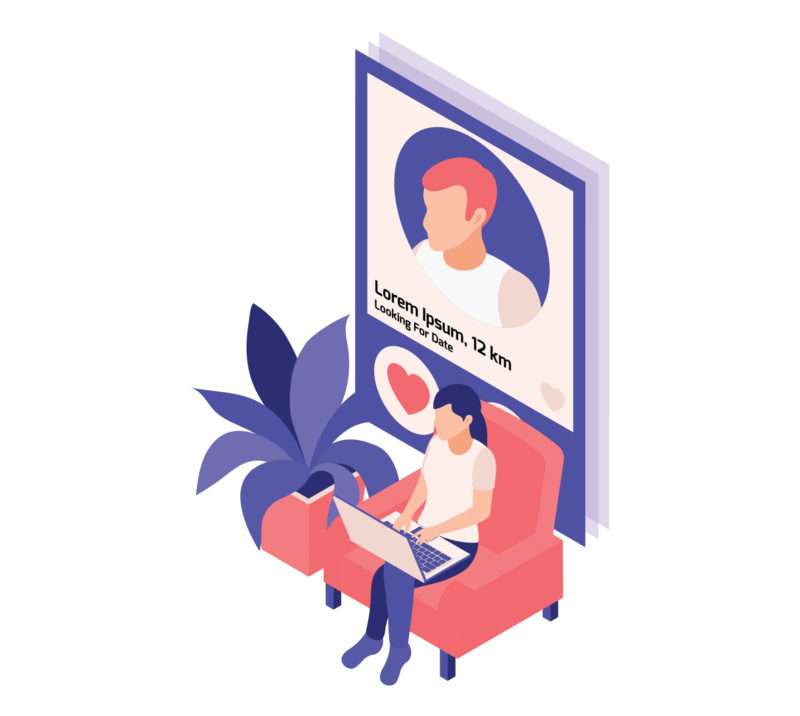
Tinder is the most popular dating app in the U.S. as of 2021 by number of downloads.
In 2021, Tinder had over one million monthly downloads and 1.6 billion swipes per day.
Here are some more stats on online dating apps:
- 60% of people between the ages 18-29 have used a dating app or website at least once.
- 66% of these users have gone on a date with someone they met online.
- 20% of couples in the United States met using online dating services
This type of information is crucial to know when creating dating apps, and is just the tip of the iceberg.
This will also help you better understand who your target audience is and what their preferences are.
PRO TIP:
Conduct thorough market research to understand the market you’re trying to get into. It’ll help give you an idea of what your app should offer as well as the money that can be made when you create a dating app.
1.1 Competition
A major part of your research should also include research on your competitors.
There are hundreds, if not thousands, of dating apps and websites out there.
Tinder, Bumble, Match, eHarmony, OkCupid, Plenty of Fish, Hinge, Grindr, and the list goes on.
The good news is, many of these mobile app focus on a niche, like targeting older users, Christian users, Jewish users, LGBTQ users, and so on—which narrows down the competition.
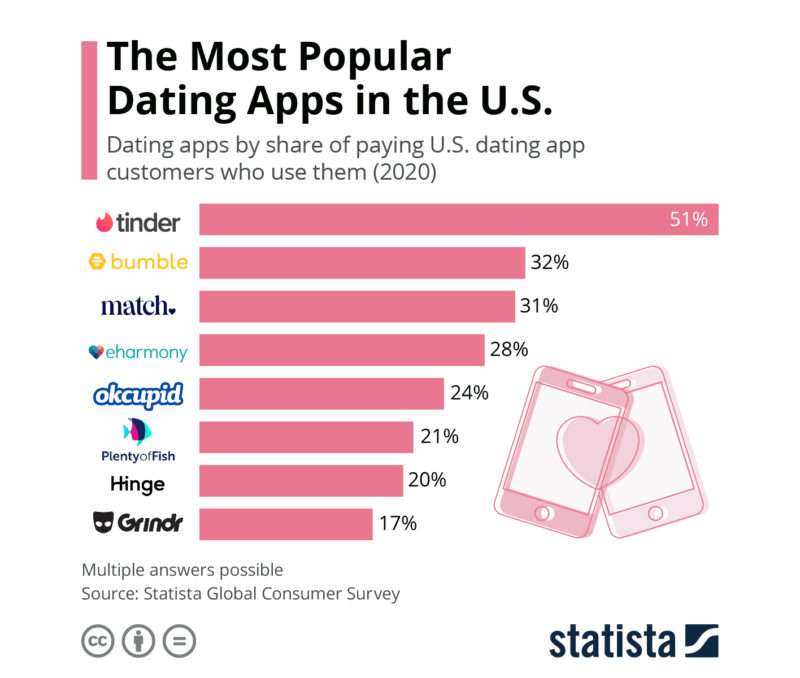
If your app is primarily for older users, for example, then your competition will be much smaller.
This is also a big reason why it’s important to establish who your target audience is.
The last thing you want to do is aim to create a dating app for everyone. Targeting a specific niche means not only less competition, but more loyal users.
What are these popular apps doing right?
What do users love about them?
What do they hate?
Read user feedback to understand their pain points. Even if you have something new to offer in your own dating app, you can also improve upon what’s already been done.
Let’s take a look at a few of the most popular dating apps on the market, what features they offer, and the niche they target.
1.2 Tinder
Tinder first launched in 2012 and has since become the most popular dating app for iOS and Android.
It’s the app that invented the idea of swiping left or right when matching or rejecting potential partners, which you’ll now see in many other apps.
If both users like each other’s profiles, they’ll match, which allows them to start instant messaging each other or video chatting within the app.
It also offers a “Discover” feature that helps users connect with potential matches.
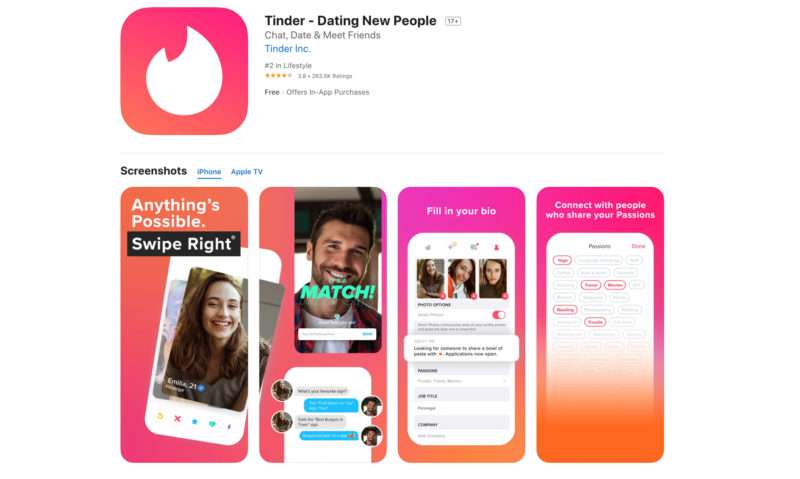
These basic app features are free for users, but are limited. For example, you can only swipe right up to 100 times a day unless you upgrade to the paid plan, which ranges from $10 to $30 a month.
While Tinder doesn’t cater to a super specific niche, like gay men for example, its demographic is primarily millenials and Gen-Z users, which is the group of users they focus on.
1.3 Bumble
While Bumble also offers common dating app features like in-app messaging and swiping right or left to like or dislike user profiles, it differentiates itself by creating a women-first experience.
Men aren’t able to connect or make communication with a potential match until she makes the first move. If that doesn’t happen within a 24-hour window, they unmatch.
This essentially puts women in control, but might be a put-off for men using the app.

The app’s basic features are free to use, but are limited.
For example, while you have the ability to message people in the free version, you can’t see who liked you unless you upgrade to their paid subscription plan, which varies in price depending on the subscription length.
1.4 Grindr
Grindr is the largest dating app for gay, Bi, Trans, and Queer people, and has over six million active users.
While it’s marketed towards the LGBTQ community, it’s commonly known as a hookup app for primarily gay men.
The app’s features make it easy to meet nearby singles, since its matches are based on geo targeting and it has an interface that lets users see when others are online and how close they are.

Grindr profiles are more minimalistic than other apps.
Users can provide their basic information, like age, location, and “tribe”, as well as an “about me” section.
While it’s free to use, there is a paid version called Grindr Xtra, which allows users an ad-free experience, more profile views, unlimited blocks and favorites, and more.
1.5 Understanding Your Audience
In the world of dating app development, understanding your audience is more than just knowing who might download your app.
It’s about delving deep into their desires, fears, and what they truly seek in a dating experience.
The more you understand about your potential users, the better equipped you’ll be to design an app that resonates with them.
Firstly, consider demographics: age, gender, location, and even occupation.
A dating app targeting busy professionals in their 30s will have a different feel than one aimed at college students.
But it’s not just age or profession; it’s also about cultural nuances.
What works for singles in New York might not resonate with those in Tokyo or Mumbai.
Beyond demographics lie psychographics—understanding the habits, values, interests, and lifestyles of your potential users.
Are they looking for long-term relationships or casual dating? Are they tech-savvy and looking for cutting-edge features or do they value simplicity?
Feedback is invaluable here.
Surveys, focus groups, or even one-on-one interviews can provide rich insights.
Listening to what potential users like and dislike about existing apps can offer a roadmap for what to include, what to avoid, and how to innovate.
As you can tell from the previous section when looking at popular dating apps, they mostly tend to have similar features, like in-app messaging and swiping, but some do have smaller features unique to that particular app, like profile favorites.
Let’s highlight a few of the most essential dating app development features.

2.1 Profile
Even if your app is going for quick hookups rather than big romances, every dating app needs some kind of profile page that highlights key data about the user, such as their location, age, photos, interests, etc.
A user profile should also be verifiable and include security checks like email verification, phone number, Facebook verification, and so on.

Photo Credit: blog.photofeeler.com
2.2 Matching
Matching with other users is the heart of any dating application.
The ability to match with users can vary depending on the app.
Some mobile apps use the swiping left or right mechanism to match with others, some use geo-targeting like Grindr, and others use information based on answered questions to match, like OkCupid.
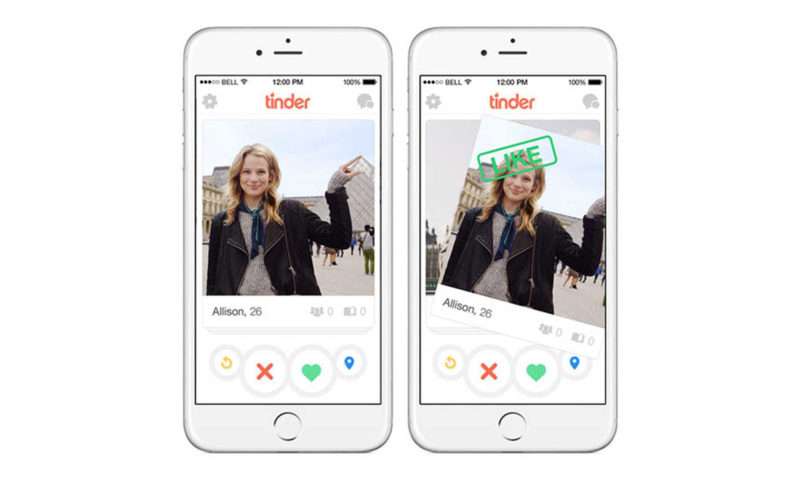
And then, of course, many apps incorporate all of these functionalities into their matching algorithms.
Some dating apps will also use more advanced technology, like artificial intelligence, to learn users’ preferences based on their imputed information and what they like or dislike to make matches.
2.3 User Verification Features
Building trust in dating apps really hinges on the authenticity of profiles.
User verification can deter fake profiles and bolster your app’s credibility.
Methods like SMS and email verification confirm the legitimacy of user contacts.
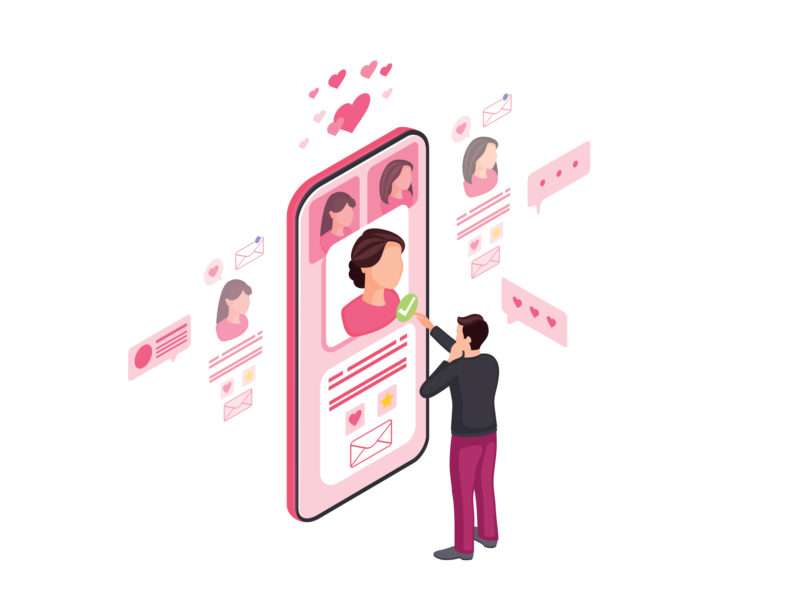
Linking to social media profiles, such as Facebook or Instagram, can vouch for a profile’s genuineness without compromising data security.
Another approach is photo or video verification, where users submit real-time images or clips, ensuring they match their profile photos.
While these features enhance safety, it’s vital they remain non-intrusive to ensure a positive user experience.
2.4 Push Notifications
People are busy and not everyone has the time to check their app to see what activity is going on, like a missed swipe or message from another user.
Push notifications are crucial to any dating app to alert users to important activity.
It’s also a great way to remind users to come back to the app if they’ve been away for too long. For example, it’s common to alert users when there are new potential matches in their area.
And of course, push notifications are a way to keep users up-to-date on what’s new in the app or upcoming promotions.

2.5 Security Features
When using a dating app that provides communication pathways with strangers, security is key.
People want to feel safe not only messaging someone they don’t know, but also when meeting them in the real world.
Dating apps also open the doors to new methods of online harassment, which is why these apps will offer a number of security features, like anonymous matching, profile verification, and the ability to report or block users.
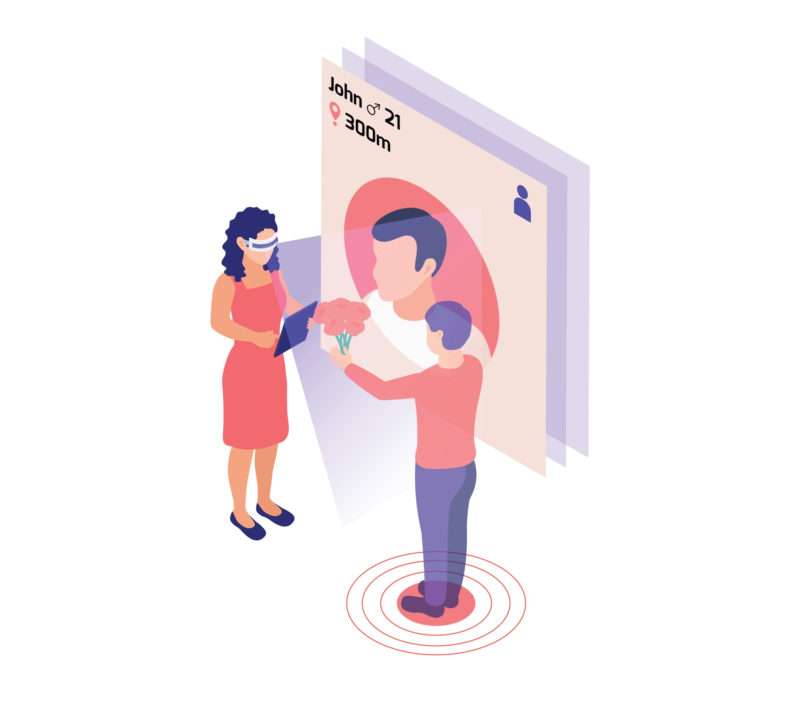
Bumble is an $8 billion company.
Match.com is a $45 billion company as the operator of other dating apps like Tinder, Hinge, OkCupid, Match, and Plenty of Fish.
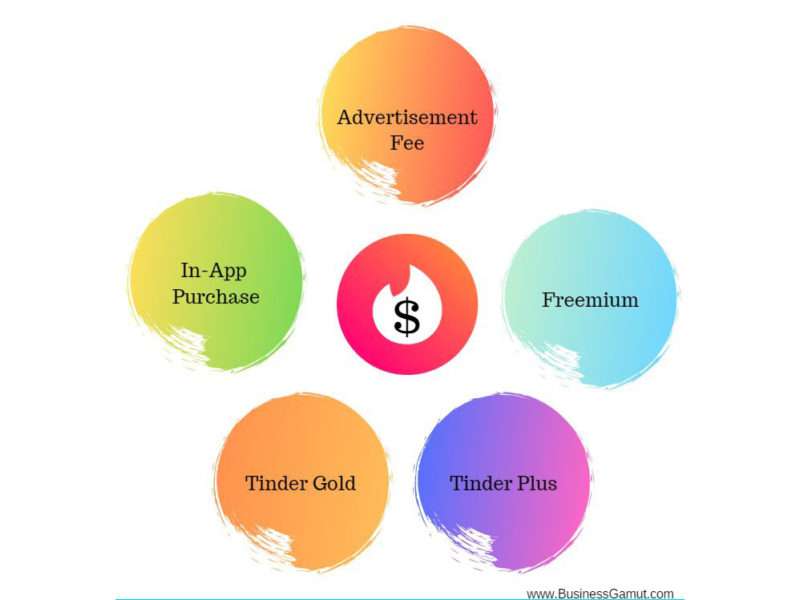
3.1 Subscription Plans
When it comes to dating apps, people use them because they want to find a partner, and they’re much more willing to shell out money for paid subscriptions than other types of apps.
Dating apps will typically offer a free plan for users, which is often limited when it comes to features, but it’s a great way to give users a taste of what an app can do before giving them the option to upgrade to a paid plan.
This “freemium” subscription plan is the core business model for dating apps.
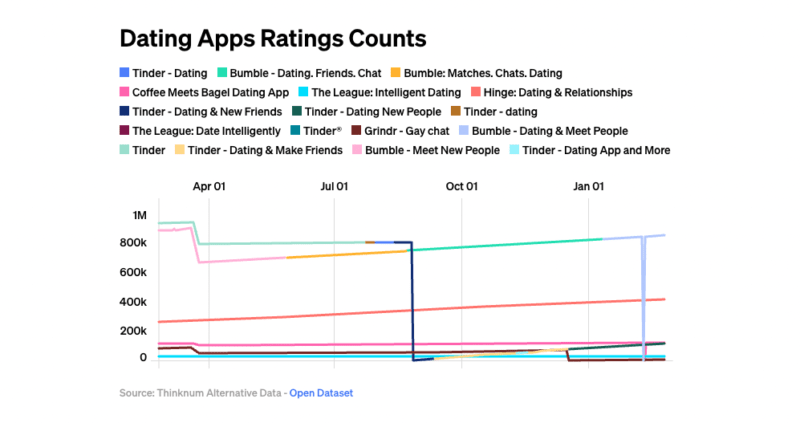
Dating apps will generally offer multiple subscription tiers, each unlocking different features.
They’ll also often start users off with some kind of entry deal, like “30% off your first month”, to entice users into a paid plan.
3.2 Advertising
Another common way for dating apps to earn revenue is through advertisements.
This can come in the form of banner ads, which is a simple format that allows you to place dynamic or static ads on a banner within the app.
Another form of advertising is interstitial ads, which is similar to banners but takes up the whole screen.
Native ads are more personalized ads and are less annoying to users. These types of ads are sponsored content that are meant to match the look and feel of the media format in which they appear.

There are also video ads, playable ads, and more.
The key is to use ads wisely, especially if you have paid users. The last thing you want is to annoy them with advertisements in the app when they’re paying a premium price.
Some dating apps will utilize ads in the free version of the app only, like Tinder.
PRO TIP:
If you want to utilize ads even in the paid version of your successful dating app, go with a format that feels more natural and less annoying or intrusive, like native apps.
3.3 In-App Purchases
Whether your app is free to use or charges a premium, it can still earn money through in-app purchases, like coins, virtual gifts, profile boosts and more.
There’s a lot you can offer with in-app purchases to enhance the user experience while also monetizing your app.
This one-time purchase gives users additional benefits and features without forcing them into a paid subscription.

Photo Credit: sweetpricing.com
It goes without saying (but I’ll say it anyway), there’s money to be made in creating a dating app.
Just know that the competition is fierce and the best way to succeed is to do your research before setting out, find your target audience, offer something new, and improve on what’s already been done before.
In our Simple Starter package, we can get you on the right track by providing a detailed technical writeup of your dating app ideas, wireframes of the app design and layout, and market and user research to help your dating app business find its niche.
This will prepare you for the custom dating app development that comes next.
What dating app feature ideas would you like to see?




